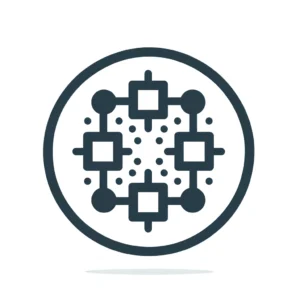“`html
Astar Network has achieved a significant milestone by fully integrating its native token, ASTR, into both the Superchain via ERC-7802 and Chainlink’s Cross-Chain Interoperability Protocol (CCIP). This development makes ASTR the first token contract to achieve full interoperability under these two protocols, marking a pivotal step in the token’s multi-chain journey.
A New Era of Interoperability
The integration enables ASTR to seamlessly move through its Polkadot-based layer 1 on the Soneium blockchain and into other Superchains built on Optimism, such as Base, OP Mainnet, and World Chain. This advancement significantly enhances cross-chain functionality, streamlining token transfers and expanding ASTR’s usability across diverse blockchain networks.
When Optimism’s Superchain interoperability becomes fully operational, users will be able to transfer tokens across Superchain networks with just two clicks. This simplified process will make it easier for both beginners and intermediate users to navigate the complexities of cross-chain transactions.
Bridging Polkadot and Ethereum Ecosystems
This collaboration represents one of the first major integrations connecting the Polkadot and Ethereum ecosystems. By leveraging both Polkadot’s robust infrastructure and Ethereum’s established network, Astar Network is advancing its mission to transform ASTR into a fully multi-chain asset. This integration is a critical step toward building broader connectivity across various web3 projects.
How the Integration Works
The dual integration combines the benefits of ERC-7802 and Chainlink’s CCIP. The latter utilizes Chainlink’s decentralized oracle infrastructure to enable secure token transfers between blockchains. Here’s how the system operates:
- When a user initiates a transfer, Chainlink’s Decentralized Oracle Network validates the transaction on the source blockchain.
- Once validated, the data is relayed to the destination blockchain, triggering the mint function for the corresponding token.
- The system also includes CrosschainMint and CrosschainBurn functions, which allow authorized bridges to manage token supply across chains effectively.
This robust mechanism ensures secure and efficient interoperability for ASTR, making it a reliable multi-chain utility token.
Role-Based Access Control for Security
To enhance security, the integration employs role-based access control. Only Chainlink’s cross-chain contracts are authorized to mint or burn ASTR tokens. This approach minimizes risks and ensures that token supply management remains decentralized and secure.
Astr’s Role Across Ecosystems
According to Maarten Henskens, Head of the Astar Foundation, this integration positions ASTR as more than just a native token. It is evolving into a core asset powering various applications across DeFi, gaming, and creative ecosystems.
“ASTR isn’t just the native token of Astar Network—it’s becoming a core asset across DeFi, gaming, and creative ecosystems. We’re building it as a true multi-chain utility token designed to power activity wherever innovation happens,” said Henskens.
What This Means for Users and Developers
This integration provides significant benefits for both users and developers within the Astar ecosystem:
- For Users: Simplified token transfers across multiple chains, reducing complexity and transaction time.
- For Developers: Access to a robust infrastructure for building multi-chain applications, fostering innovation across different blockchain platforms.
By connecting the Polkadot and Ethereum ecosystems and leveraging Chainlink’s oracle technology, Astar Network is setting a new standard for interoperability in the blockchain space. This integration underscores its commitment to creating a decentralized, interconnected future for web3.
“`

























